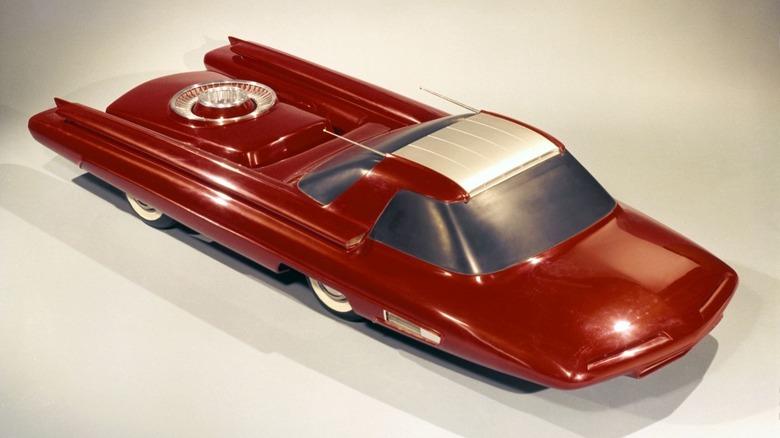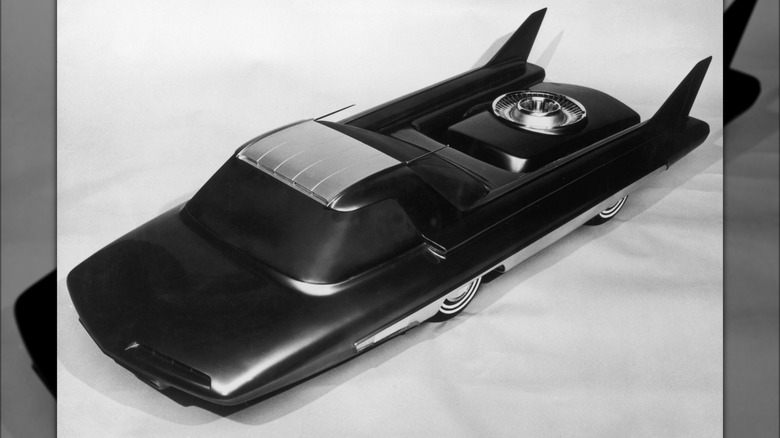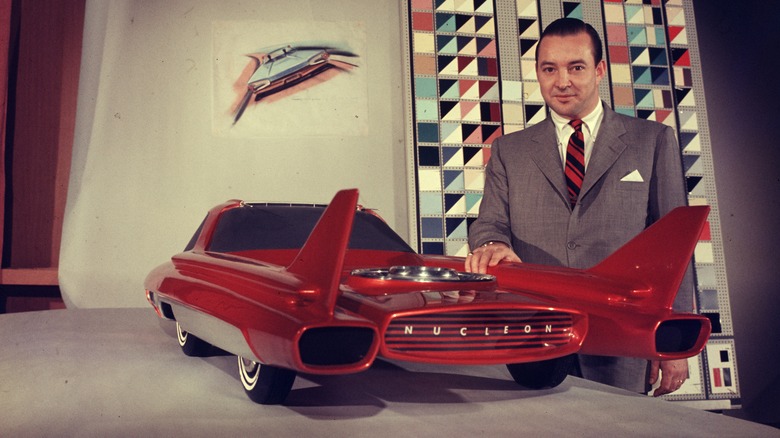Ford Nucleon: A Glimpse At The Nuclear Future That Never Was
Ford's Nucleon looks and sounds like a vehicle ripped straight outta "The Jetsons." Despite having only 24 episodes, the cartoon set in 2062 became an endearingly iconic piece of Americana. It showcased a wildly inventive swathe of technological advancements only found in our dreams, like flying cars, jetpacks, and robotic maids — things that would surely come to fruition in the future, at least from the perspective of folks living in 1962.
It stands to reason then that a car powered by an on-board nuclear reactor would have fit in perfectly. The "Atomic Era" was all the rage during the 1950s, and when the Shippingport Atomic Power Station in Pennsylvania went online on Dec. 18, 1957, the future looked bright. It was the first full-scale nuclear plant in the United States, providing power to residents in the Pittsburgh area.
Given that, it makes complete sense for Ford to capitalize on such a momentous event. As such, in 1958, it rolled out a 3/8-scale model depicting how the future of atomic energy would impact automotive design.
Ford wanted to go nuclear
At its heart, the Nucleon had a self-contained nuclear reactor that the owner could easily replace whenever needed. Moreover, it could roll into any charging station and recharge, thus "doing away with the service station as it is known today." Sound familiar?
Of course, such a concept would only be possible if and when the size and weight of such reactors — and the shielding required to protect passengers from radioactive decay – could be miniaturized enough to fit onto an ordinary-sized car. But that didn't stop Ford from trying. The entire concept of the Nucleon was driven by its "unwillingness to admit that a thing can not be done simply because it has not been done."
The core was the key. The power capsule holding it would be suspended between a pair of rear booms, making it resemble a twin-boom fighter plane from the 1940s. The energy created by the nuclear reaction was turned into electricity, which was then used to power the wheels. Not only could the core be swapped out based on a driver's needs, but the coup de grâce was that the car could travel some 5,000 miles (possibly more) on a single charge.
The old-school idea of a drivetrain consisting of mechanical components (i.e., transmission, differential, driveshaft, axles, CV joints, etc.) would be replaced by electronic torque converters that were somehow part of the power package.
The future was now!
The passenger compartment took on an almost cab appearance with a single pillarless windshield and compound rear windows. A cantilever roof met the windshield, and intakes situated around the front of the vehicle would bring air into the cabin and presumably be directed back to the reactor. Ford's advertising brochure never mentions a single critical detail on how exactly the reactor would actually be cooled.
Then there's the Nucleon's overall odd appearance. One would say it looked "futuristic" ... if you looked through a late 1950's lens. It boasted a very bizarre set of dimensions: a wheelbase of 69.4 inches, a length of 200.3 inches, a width of 77.4 inches, and a height of 41.4 inches. It would have been as long as a Dodge Durango, a skoosh wider than today's average car, seven full inches shorter than a 2023 Corvette, with the wheelbase of a Mini Cooper. Apparently, the forward over the front axle cabin and short wheelbase design had to be done to balance out the enormous weight of the nuclear reactor strapped to the back.
Certainly, the Nucleon never went beyond the model, but Ford certainly deserves credit for its forward thinking.


